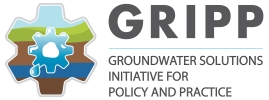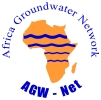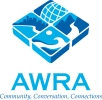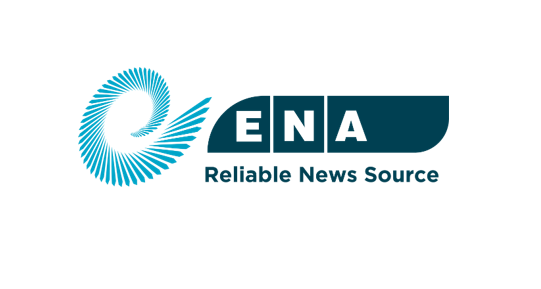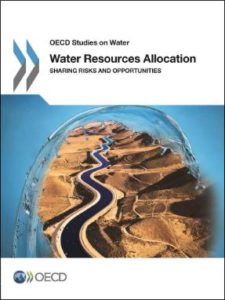 As the largest reservoir of freshwater on Earth, groundwater provides a valuable store of natural capital. How groundwater is accessed by individual users and how it is allocated among competing uses will determine the benefits that individuals, firms, farmers and society as a whole reap from the resource – today and in the future. These benefits take many forms – from the economic value derived from productive uses in industry and irrigation, and improved health from safe drinking water supply — to the ecological value provided by supporting key species in groundwater-dependent ecosystems. Allocation policies, which determine who can access the resource, how, when and where, need to balance these various extractive and non-extractive values, as well as societal equity in access.
As the largest reservoir of freshwater on Earth, groundwater provides a valuable store of natural capital. How groundwater is accessed by individual users and how it is allocated among competing uses will determine the benefits that individuals, firms, farmers and society as a whole reap from the resource – today and in the future. These benefits take many forms – from the economic value derived from productive uses in industry and irrigation, and improved health from safe drinking water supply — to the ecological value provided by supporting key species in groundwater-dependent ecosystems. Allocation policies, which determine who can access the resource, how, when and where, need to balance these various extractive and non-extractive values, as well as societal equity in access.
The OECD recently released a report Groundwater Allocation: Managing Growing Pressures on Quantity and Quality that analyses how the distinctive features of groundwater (as compared to surface water) could be addressed in allocation policy design. Groundwater generally exhibits the characteristics of a common pool resource, which makes excluding users from access difficult and costly. The resource is also vulnerable to the accumulation of pollution, which can stem from legacy pollution sources,making it difficult to enforce a “polluter pays” principle for groundwater quality remediation when liability is unclear. The “invisibility” of groundwater and the highly decentralised local access make the status of the resource and it use far less well-documented than in the case of surface water. Finally, groundwater allocation must consider stocks, flows and renewability, which requires a knowledge-based and often a long-term exploitation strategy. This means that the temporal dimension of groundwater allocation – the trade-off between using the resource today or conserving it for the future – is especially critical, in particular for groundwater resources with minimal replenishment.
These distinctive features make allocating groundwater a particularly challenging task. This is especially the case in developing countries, where scientific and governance capacity, as well as financial resources may be limited. Furthermore, where large numbers of small-scale farmers depend on the resource for their livelihoods, curtailing pumping and enforcing allocation regulations can prove difficult. Energy subsidies to pump groundwater, which may aim to support farmers’ livelihoods, also provide a perverse incentive for over-use of the resource. So, how can allocation arrangements, whether driven from the government or from a more borttom-up approach, encourage more sustainable and equitable use of groundwater?
The report and an accompanying highlight OECD Green Talks Live Webinar various critical entry points to sustainable and equitable groundwater allocation, and to groundwater management more broadly. These include the shift from private ownership of the resource towards management of the resource under the public trust doctrine, which facilitates the arrangement of public control on the resource, albeit sometimes with cost implications in terms of compensation schemes for the users. Water markets, based on clear allocation rules, also provide an approach to direct groundwater use towards more productive and valuable uses (as illustrated by case studies in the USA). Water trading may also enhance the more equitable distribution of benefits from the resource (as illustrated in a case study in China).- The report also illustrates how groundwater allocation can be strengthened indirectly by adjusting energy access and subsidies related to groundwater access (as illustrated by a case study in India).
- Water pricing, in the form of abstraction charges, is also an entry point, but needs to take into account all the various values of groundwater, and requires monitoring of groundwater use, which can be costly.
- Ultimately, groundwater allocation will need to be sensitive to the context and the stakeholders. To the extent that approaches consider and include a genuine public engagement, the chances of susccessful allocation schemes increase as users effectively contribute to the collective management of the resource.
- The menu of options presented in the report is very useful for consideration in various contexts and for sharing good (and bad) practice experience.
The report finally stresses the criticality of groundwater under increasing climate variability and uncertainty, in turn emphasizing the need for better allocation schemes. An overarching point, which needs to be considered, is the conjunctive management of surface water and groundwater under a variable climate. This implies allowing for flexible allocation rules, prudent use of storage to reduce the impacts of shocks and recognizing the critical need for congruent policies and allocation schemes among both surface and groundwater.






